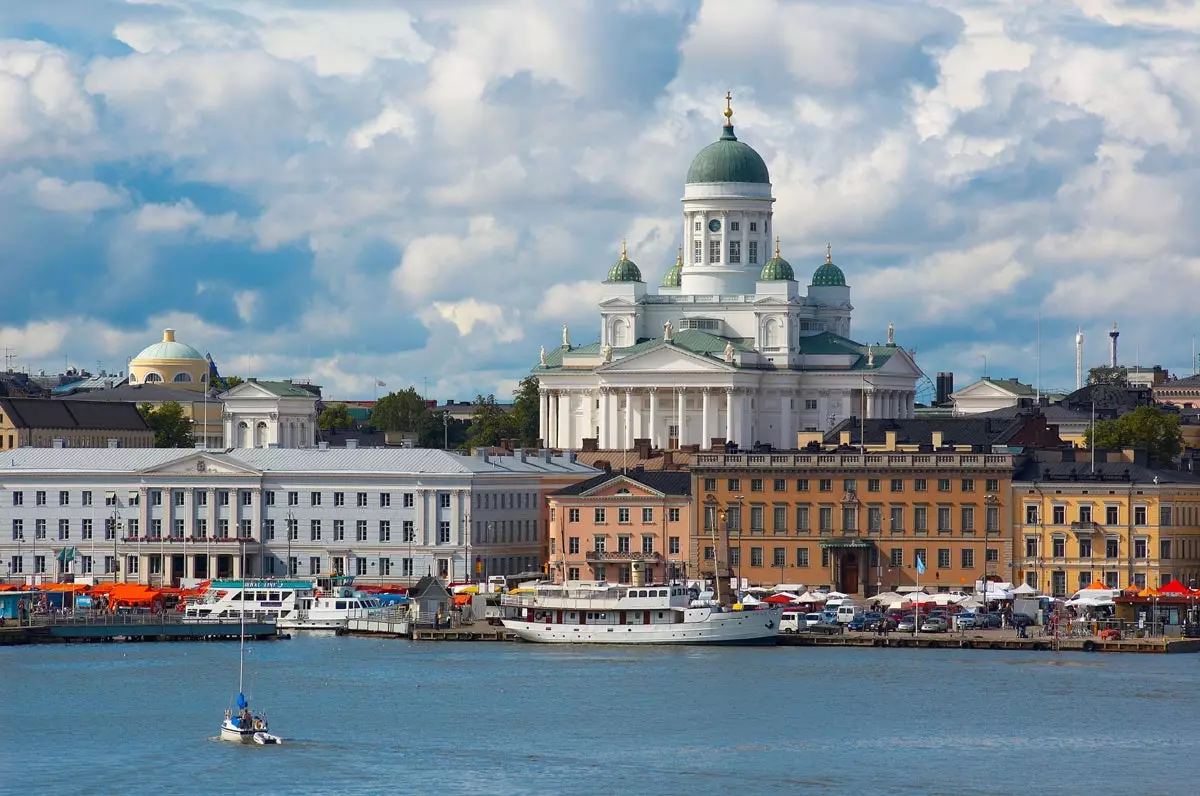
A weekend to discover Helsinki
Helsinki is a city where travelers travel. No, it's not misspelled. **It is a city for travellers, for people who already know Paris, Lyon and Biarritz well **, for those who find the Grand Tour a small thing, for those who move around JFK better than in Nuevos Ministerios.
Helsinki is a city of Finns. We have not made a mistake in this sentence either. It is a place that is only due to its own, it does not pretend to like anyone. And less to the travelers who, more and more, decide to take out a ticket and set foot in the capital of Finland. This introversion and this authenticity make it a place full of charisma. The whole country has it. Finland is in the middle of Sweden and Russia, between East and West: in geopolitical terms it has always been a key country. Throughout its history the two neighbors have occupied it. Finland has been independent since 1917. Russian and Swedish cultures are present and this gives the country its own identity that is nothing like that of neighboring countries. In fact, Finland is not a Scandinavian country: it is a Nordic country..
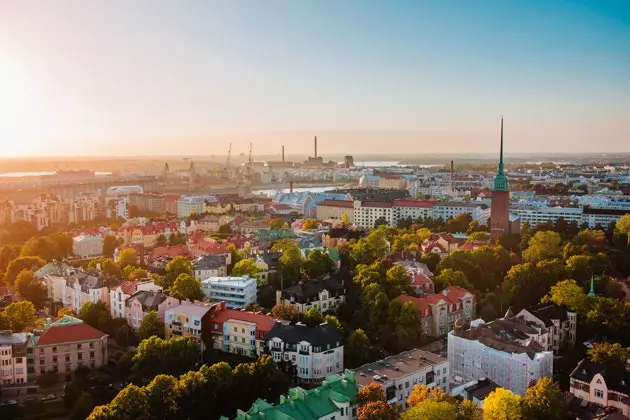
A city for travelers
FRIDAY
First impression. When you arrive in a new city you have to do two things: leave the suitcase and try to understand the shape of the city . That is: hotel and map. Let's choose a new hotel like the F6, which is a couple of minutes from the Esplanadi and a little more from the Design District. It is what we expect from a brand new hotel (opened in June) in Finland. The receptionists wear Marimekko uniforms, the design is not ostentatious but conscientious, the breakfast is healthy and cheerful, the atmosphere is informal and There are bicycles available to everyone. We leave the suitcase resting in the room and we go to the street. One moment: you have to take the bathing suit. There's a party tonight, sorry, sauna.
Afternoon on foot (from 2 to 4 hours). We are going to spend the afternoon walking. We warned you. It is the best way to taste the city, to know how and where we are located and what its main axes are. We will start on the Esplanadi, a somewhat disconcerting boulevard because it will make us feel in Paris. We are not so wrong. It was built in 1817 by the architect of classical Helsinki, Carl Ludwig Engel, German by birth and well financed by the Russian tsars who, in turn, were influenced by the continental aesthetic seen in cities like the French capital. The 'Espla' is a place for walking, shopping and socialising. Here we find the big city stores, such as Stockmann or Iittala, cafes like Strindberg, where the powerful go, or Kappelli's, which is almost 150 years old: Sibelius used to frequent it, and it even has a menu in his name. On the Esplanadi is the Kämp hotel, which has received illustrious guests since 1887. The central area is a real park that, as soon as the sun rises, attracts half of Helsinki to sit on the grass like someone who sits on a terrace.
From the Esplanadi we will go to the Plaza del Senado , also designed by Engel in neoclassical style. This is a complex built between 1822 and 1852 that encompasses the Cathedral, the Council of State, the University and the National Library. Opposite is the Tori area, with its cafes, shops and museums such as the Helsinki Stadsmuseum or City Museum, divided into five small buildings and free access. Everything is solemn and the scale is enormous, imperial. We will take the pertinent photos, we will browse in the pop ups that dot the whole city, We will talk about how evident the Russian aesthetic is and we will continue walking. Let's go to the Marketplace. This is one of the nerve centers of the city. Here people come to eat and meet at the dozens of food, drink and cafeteria stalls. No matter the time of year: it is always lively. Oh, what is that red building? The Uspenski Cathedral or Orthodox Cathedral . It seems that we are in St. Petersburg. If we have time we will approach a peninsula: Katajannoka, which has a high density of Art Nouveau buildings. This style was the Finns' way of telling Russians that they were Europeans. Katajannoka is beautiful to walk in and expensive to live in.
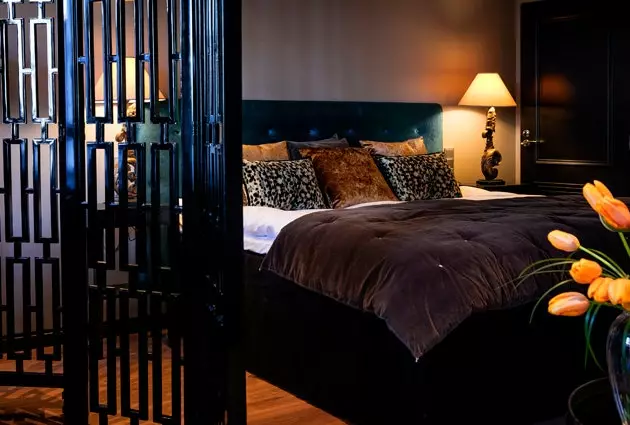
It has everything we ask for in a new hotel.
Now let's do what a Helsinki local would do: walk along the seaside (weather permitting) from the Market Square to Munkkisari , where we will finish the route and do curious things. If we look at the map it seems far away. It's not. We will meet Allas Sea Pool a newly opened complex of swimming pools, saunas and terraces that will give us a good clue about what attracts locals: well-being, good architecture and sport.
In this walk we will see the Ursula, a cafe built for the 1952 Olympics and Kaivopuisto, a huge park that makes you understand that Nature sneaks in everywhere here . We will look out of the corner of our eyes at the Eira neighborhood, where we find embassies and mansions, and we will think how pleasant it must be to live there.
Night: sauna, hamburger and cocktails. If you haven't taken a sauna you haven't been to Finland. We will do it the first day. We will go to Löyly, an almost incomprehensible place for non-Finns. It's the place to go the one that almost died of success when it opened in June, the one that everyone comments on. The building is a good example of contemporary Nordic architecture: Built in ecological wood by Avanto Architecs, it reaches nine meters in height in some areas. Loyly there are almost 2,000 m2 of sauna, restaurant, solarium, terrace and bar ; Its owners are Jasper Pääkkönen, an actor from the Viking series, and Antero Vartia, a parliamentarian, both very popular figures.
First we will take the sauna. We will choose whether traditional or wood. It is not a conventional sauna because it is taken with a bathing suit and it is mixed . We'll be sweating and chatting as long as we can stand it. A swim in the sea, no matter how cold it is? Wherever you go... After the sauna and the shower we will go to eat and drink. The sauna closes at 10:00 p.m., but the kitchen at 9:00 p.m.: let's calculate, then, the order of the ritual. In Löyly you have to be patient because there are a lot of people, but we will have fun looking at the healthy human landscape. The food here is fresh, colorful, and plentiful. This place is, as a local tells us, “a dream, the summum for a Finn”.
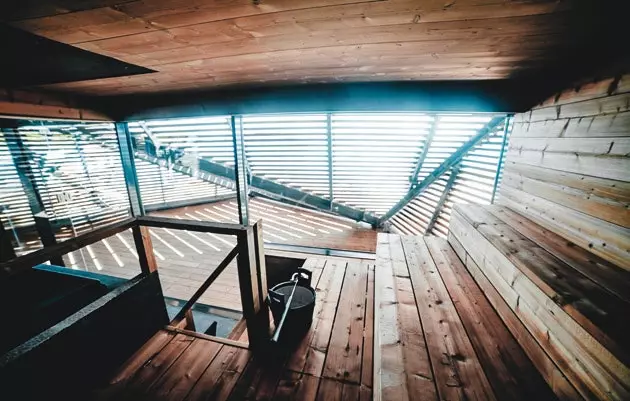
Löyly, THE hot spot
SATURDAY
We will dedicate Saturday to Finnish design, key in its lack of ostentation to understand this society. Big brands like Iittala and Arabia or names like Alvar Aalto are present in houses all over the country without giving it much importance. In an expensive country, design is affordable.
Tomorrow: design, design and more design. Before going to the design district we will pay our respects to the train station, a wonder designed by Eliel Saarinen (father of Eero Saarinen) in 1919. It is presided over by two statues that hold lanterns that, they say, illuminate travelers.
Still with goosebumps (we are mythomaniacs) we headed to the Barrio del ídem. We can also go by public transport (€8 a day), but everything is so close that it's not worth it. In the streets of this very serious district there are about 200 spaces with design as the protagonist. It is a design that does not give importance (although it knows that it does), self-conscious but without pyrotechnics. The idea is strolling through Uudenmaantaku, Korkeavuorenkatu (try to spell, brave ones) and the surrounding areas, stopping wherever we please.
There are cafes, stationery stores, hairdressers, children's clothing, vintage stores, opticians, galleries, restaurants... Any names? ** Local ; this warm shop brings together design objects, art gallery from Finns or those who have lived here and coffee, not a coffee shop.** For stylish kids we have Punavuoren Peikko , for another coffee (Finns drink a lot and eat a lot of ice cream) we have Fleuriste, where we can also buy flowers. do Something vintage or second hand? Let's go to Fasaani . If we want some very modern glasses, we will go to Proud Optiikka. **If we are looking for a powerful object that reminds us of Finland, we will visit NouNou Design ** and ask for a piece by, for example, Anu Pentinnen.
When we notice the first symptoms of Nordic Stendhal we can think about eating. Let's go Juuri. This place champions a gastrotrend that drives the locals crazy: they are l as sapas or finnish tapas . It is a simple establishment, with color and, again, drenched in local design. Juuri even has his own big kitchen book. We'll take the tasting menu and save ourselves thinking.
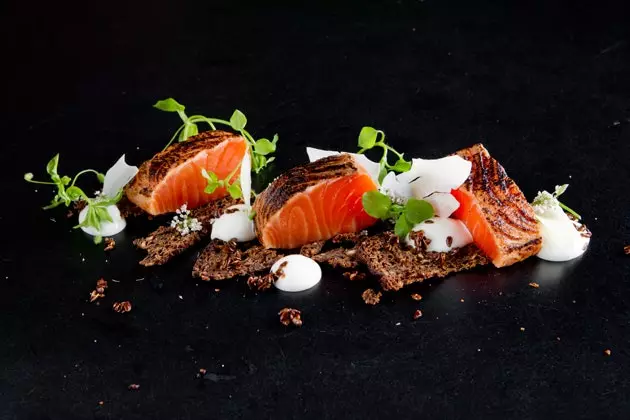
The place where Finnish tapas are tasted
Afternoon: exhibitions, shops and Aalto. After lunch, it's museum time. The Design Museum is located in a neo-Gothic building that housed, back in 1895, the first mixed school in Finland. Be careful with the date. It hosts excellent exhibitions like the one it has until September 25 on Eero Aarnio , one of the figures of contemporary design who is still alive and working . It also has a delightful permanent exhibition: it lacks any grand museum fanfare, but it is very inspiring.
After this visit, we go shopping again, a cultural act that always helps to understand the essence of the places. We return to the Esplanadi area. There is Stockmann, the quintessential Finnish department store. Areas that we cannot miss: the supermarket and the one dedicated to Finnish brands. After this immersion in the local shopping, we go for two classics of Finnish culture. Marimeko (impossible to go out without something very patterned and very vibrant) and Artek . The latter has a new space that is a hybrid between a store, a showroom and a museum. The big names and pieces of Finnish design are sold here, such as Kukkapuro, Tapiovara and the most popular ones such as Aalto, Arabia and Ittala. Starting in the fall, these last two firms will open a new design center in Helsinki.
The time has come to prepare for one of the big moments of the weekend. We are going to visit the first building of Alvar Aalto, one of the great claims of this country. The architect thought Academic Bookstore , one of his great projects, in 1962 and finished building it seven years later. And he thought of it in its entirety, from the doorknobs to the lecterns where the books stand, passing through the chilling skylights. It is a lively place, warm and without any pose. Pure Aalto.
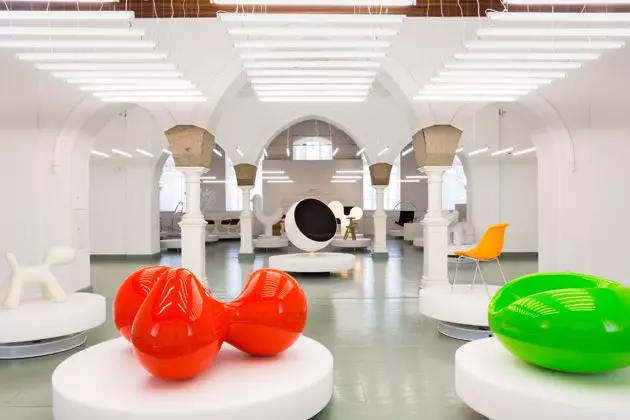
Interior of the Design Museum
Night: gastromoment. We are hungry and we have two options for dinner. The first involves following the high-maniac route. It is something that we can only do here in Helsinki. It is about having dinner in the restaurant of the Savoy , another space designed by Aalto and a complete mecca for arch-fetishists. He built it before the bookstore, in 1936, and everything about it is pure modernity. Dining here, on the top floor of a building on the Esplanadi, at its wooden tables and with the Savoy vase close by, can be quite memorable. This is the formal option, as formal as Helsinki can be.
The second proposal is to have dinner in one of the fashionable places of the moment. Sellama The Cock and it is a few minutes and attached to the hotel where we slept. It is the latest project by Richard McCormick, one of the country's star restaurateurs. It is a bistro with an international air and a local public who always seems to lead interesting lives. The ground floor is a huge cellar and lit in the way you always see beautiful people. If it's full we can try going to **BasBas**, by chef and sommelier Niki Thieulon , although it may be a losing battle: everyone wants to go to this restaurant. If you still have strength after dinner, we dare to try the Kaurismaki bar. It's called Kafé Moskova and it's in Kampi. If you close your eyes or if you drink enough vodka, you will think that you are in a secret and Soviet place.
Sunday: morning in the islands. Why start the day in a conventional city when you can start on several islands? We take the ferry to Suomenlinna, a sea fortress that encompasses several islands . It is the most visited attraction in Finland. It doesn't seem exciting on paper, but it ends up being very interesting. The trips serve to break down prejudices even if they are strong as fortress walls. This trip (15 minutes) allows you to see the curious morphology of the city and understand the presence of the sea in it. Also because it will be an injection of nature. Suomenlinna was built in 1748 and has defended three countries: Finland, Sweden and Russia. Today, it is a kind of village with historical weight, where locals come to soak up the green, to eat (there are 11 cafes and restaurants), to have picnics, play sports, visit secret corridors and breathe even purer air than in the city. One ends up thinking what it must be like to live there, in the middle of nothing and everything. About 800 people do.
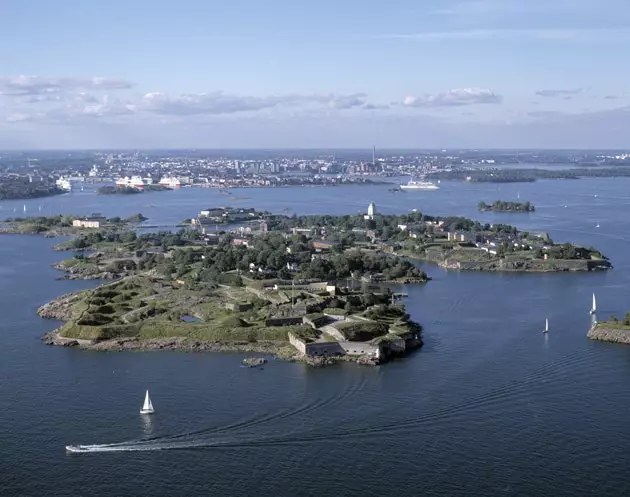
Nature in a sea fortress
Archimaniac afternoon. We take the ferry back and return to the mainland: to Helsinki. The architectural route begins. In this city, Neoclassicism, Art Nouveau, the work of Alvar Aalto, wooden and contemporary architecture coexist. We will focus on the 20th and 21st centuries and head to the Kiasma. This museum was opened in 1998 and built by Steven Hall, It exhibits art of the national and international present and of first level. This summer he has shown the work of Ernesto Neto and in the fall he will dedicate a major exhibition to Mona Hatoum. It is that kind of museum where you want to be, browse in the bookstore and stay to eat.
We follow the route, heading towards the Finlandia Hall, another of Alvar Aalto's great works. Made of white Carrara marble (which they accuse of not keeping well) remains elegant, powerful and discreet . All at once, like Aalto. After saying goodbye to the great Finnish architect, we will continue on our way. We'll take a look (no time for more) at the HAM-Helsinki ArtMuseum, Located in a functionalist building from 1937 that was part of the facilities for the 1952 Olympic Games.
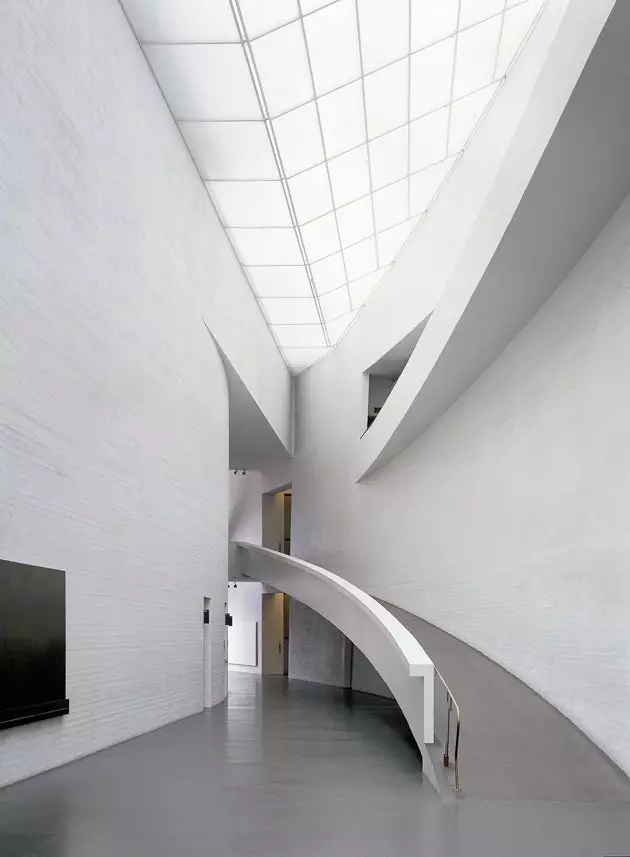
Kiasma, the gateway to the art of the present
We will finish this journey and the weekend in the Chapel of Silence or Kamppi Chapel. This oddity was built in 2012 when the city was the Design Capital of the World. It is made of wood and located in the center of the city, in Kamppi. It is a place conceived for recollection and silence. It's simple: just a few benches and a lot of wood, but little else is needed to achieve that goal. We can't think of a better place to end the weekend in Helsinki. This is the country of silence: here you want to talk in whispers. But there is something that we will say out loud when we are on our way to the airport: “we will be back”.
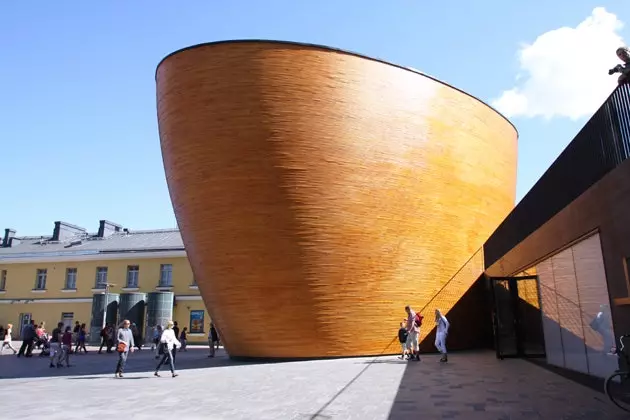
The Chapel of Silence, where you feel like whispering
